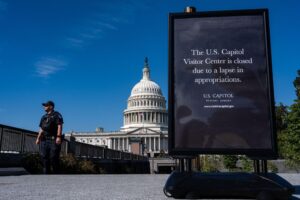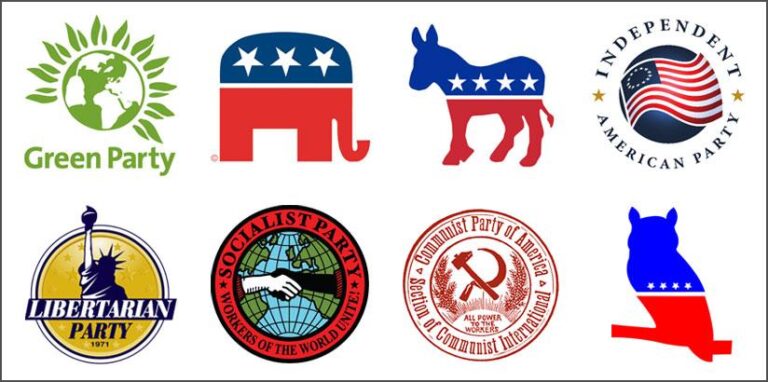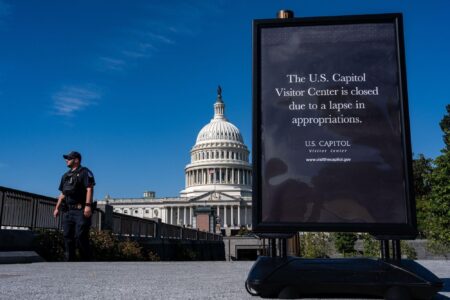Unveiling America’s Political Spectrum: Beyond the Two-Party Illusion
Unmasking the Multiplicity Within the American Political Arena
Although the U.S. political scene is frequently depicted as a straightforward battle between Democrats and Republicans, the truth reveals a far richer tapestry. Beneath this apparent binary lies a quartet of ideological factions vying for influence, each with distinct priorities and philosophies. This oversimplification into two dominant parties obscures the diverse policy demands of millions of Americans, resulting in widespread voter dissatisfaction and political inertia. These groups—ranging from progressive activists to libertarian advocates, populist nationalists, and traditional conservatives—are compelled to operate within two broad party platforms that often dilute their unique voices.
To better understand this complexity, consider the following breakdown of the primary ideological groups often mistakenly lumped together:
- Progressive Advocates: Champions of comprehensive social welfare, aggressive climate policies, and systemic reforms.
- Centrist Liberals: Moderate left-leaning individuals who favor gradual reforms and pragmatic policy-making.
- Populist Conservatives: Emphasize national sovereignty, economic protectionism, and skepticism toward global institutions.
- Traditional Right-Wing Conservatives: Support limited government intervention, free-market principles, and preservation of cultural norms.
| Faction | Fundamental Beliefs | Policy Priorities |
|---|---|---|
| Progressive Advocates | Social justice & environmental sustainability | Medicare for All, Green New Deal initiatives |
| Centrist Liberals | Incremental reform & institutional trust | Economic stimulus, diplomatic engagement |
| Populist Conservatives | Nationalism & anti-globalism | Immigration restrictions, trade tariffs |
| Traditional Right-Wing Conservatives | Market freedom & cultural heritage | Tax reduction, school choice policies |
How the Two-Party Framework Distorts True Representation
The American political system is inherently more pluralistic than the prevailing two-party narrative suggests. However, the electoral structure compresses diverse political ideologies into just two dominant parties, creating a significant disconnect between voter preferences and their actual political representation. This dynamic sidelines minority viewpoints and stifles meaningful debate, fostering voter alienation and disengagement.
Key repercussions of this system include:
- Vote Dilution: Supporters of smaller parties often perceive their votes as ineffective, reinforcing the dominance of the two major parties.
- Heightened Polarization: The binary choice intensifies ideological extremes, marginalizing moderate or hybrid perspectives.
- Institutional Barriers: Stringent ballot access laws and debate participation rules hinder smaller parties from gaining visibility.
| Problem | Effect on Electorate | Long-Term Consequence |
|---|---|---|
| Restricted Options | Voters feel confined to two choices | Declining voter turnout and engagement |
| Unequal Ballot Access | Third parties rarely appear on ballots | Entrenchment of two-party dominance |
| Winner-Take-All Voting | Minority voices are marginalized | Increased political division |
Obstacles Hindering Third and Fourth Parties from Gaining Momentum
Minor parties in the United States face formidable challenges rooted in institutional design. Electoral regulations, such as varying state ballot access requirements and exclusion from major debates, systematically favor the entrenched Democratic and Republican parties. This structural bias limits the visibility and viability of alternative political movements, even when they resonate with a significant segment of voters. Additionally, the perception that voting for third parties is futile discourages potential supporters, perpetuating a cycle of marginalization.
Financial constraints and limited media coverage further restrict these parties’ ability to build lasting campaigns. The prevalent winner-take-all electoral system exacerbates these difficulties by rewarding only the largest parties. The following outlines the primary barriers faced:
- Ballot Access Complexity: Inconsistent and stringent state laws impede nationwide candidacies.
- Media and Debate Exclusion: Major platforms often overlook non-major party candidates.
- Electoral System Bias: Winner-take-all districts prevent proportional representation.
- Funding Disadvantages: Established parties benefit from robust fundraising networks.
- Voter Psychology: Strategic voting discourages support for smaller parties.
| Barrier | Effect |
|---|---|
| Ballot Access | Reduced voter exposure and choice |
| Debate Participation | Limited public recognition |
| Campaign Financing | Constrained outreach and mobilization |
| Winner-Take-All Voting | Dilution of minority votes |
Electoral Reforms to Cultivate a Vibrant Multi-Party Democracy
Transforming the American political landscape requires more than acknowledging the existence of multiple parties; it necessitates a comprehensive reform of the electoral system that currently entrenches two-party dominance. The first-past-the-post voting method entrenches a cycle where third-party candidates struggle to gain traction. Introducing alternatives like ranked-choice voting or proportional representation can empower voters to express nuanced preferences, encouraging candidates to build broader coalitions and fostering a more inclusive political dialogue.
Essential reforms to invigorate multi-party participation include:
- Adopting ranked-choice voting nationwide to minimize wasted votes and promote majority support.
- Creating independent redistricting commissions to eliminate partisan gerrymandering.
- Relaxing ballot access requirements to facilitate easier entry for minor parties.
- Implementing public campaign financing to reduce the influence of wealthy donors.
| Reform | Current Implementation | Expected Benefits |
|---|---|---|
| Ranked-Choice Voting | Used in select cities and states | Encourages diverse candidates, reduces polarization |
| Independent Redistricting | Mostly controlled by state legislatures | Fairer representation, fewer safe seats |
| Ballot Access Reform | Varies widely, often restrictive | Greater inclusion of minor parties |
| Public Campaign Funding | Rarely applied at federal level | Limits big donor influence, levels playing field |
Charting a Path Toward Inclusive Political Representation
As the United States continues to wrestle with the constraints of its entrenched two-party system, the voices of multiple political factions remain marginalized, complicating the nation’s democratic discourse. Overcoming the structural impediments that confine diverse political perspectives is crucial for cultivating a more representative and dynamic political environment. Without meaningful reform, the current system risks perpetuating exclusion and limiting the nation’s capacity for substantive political progress.







